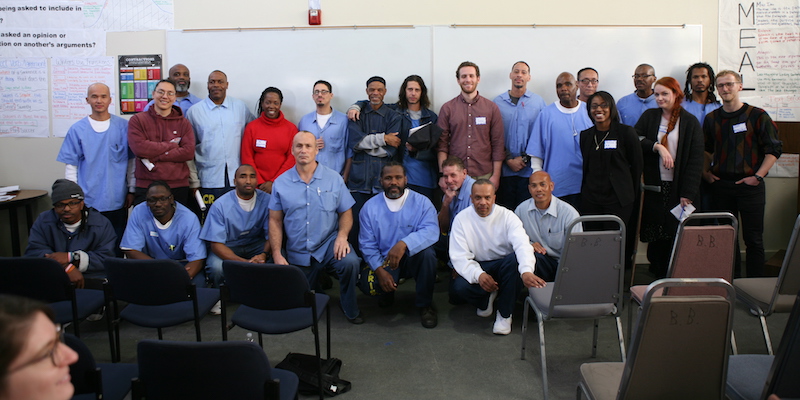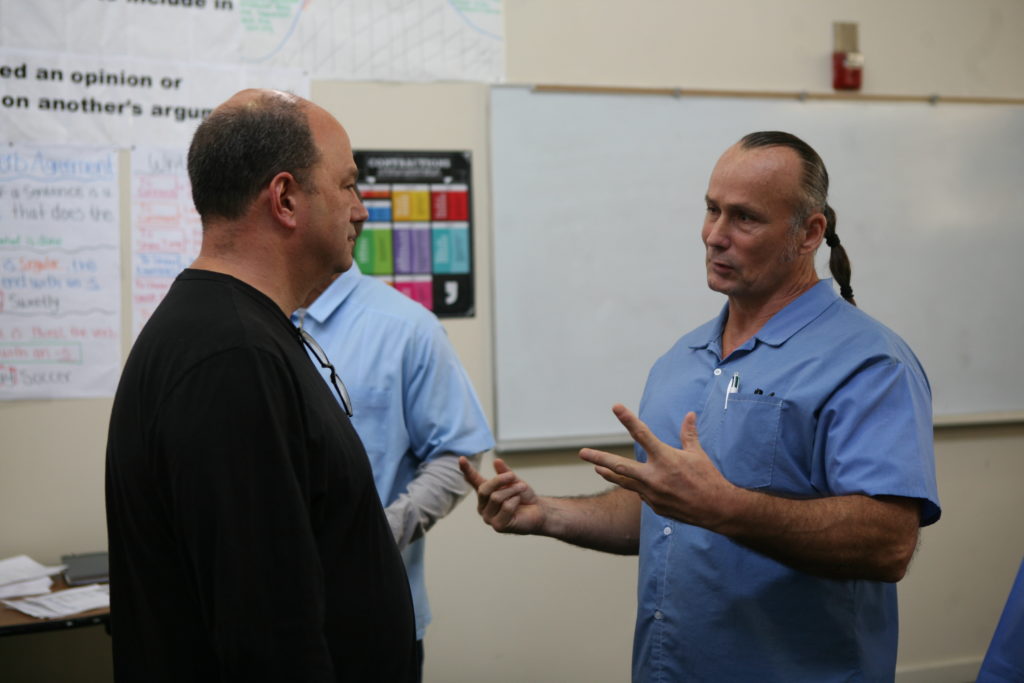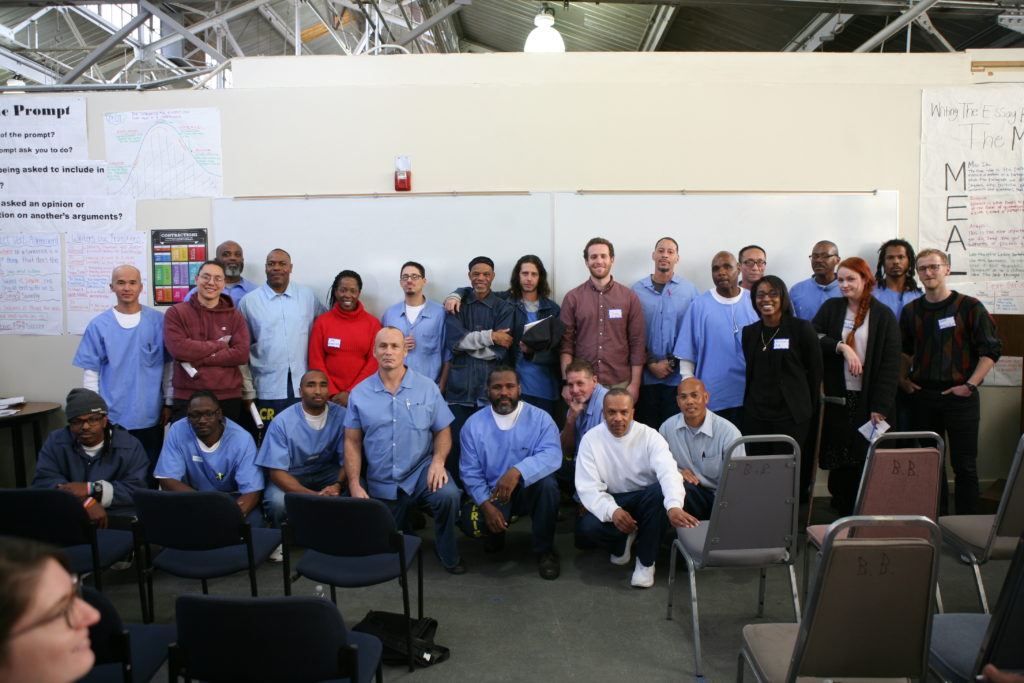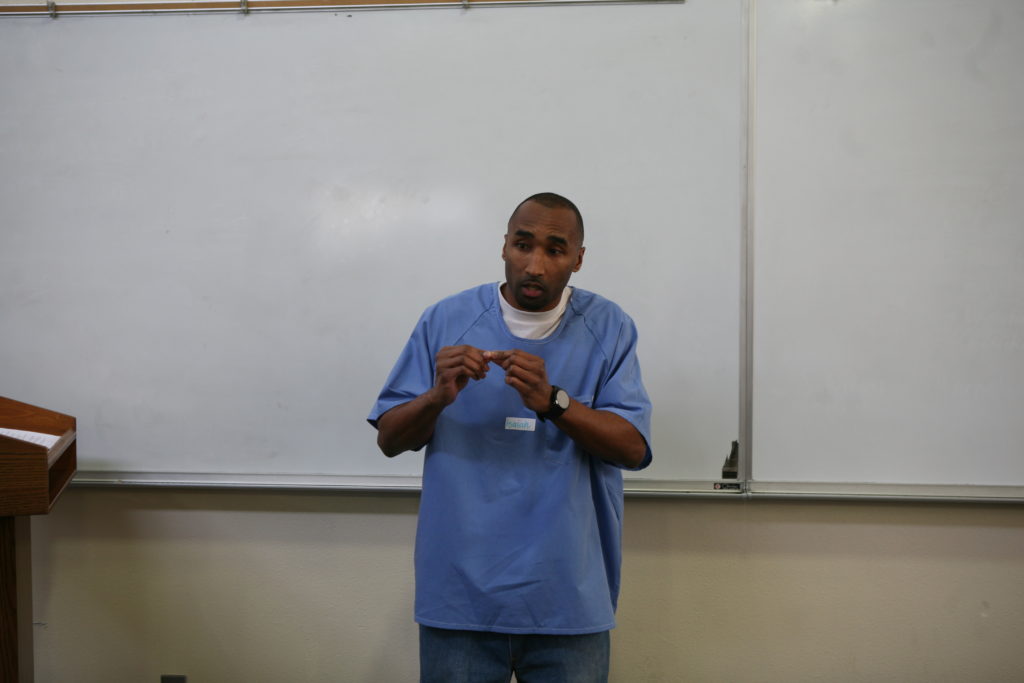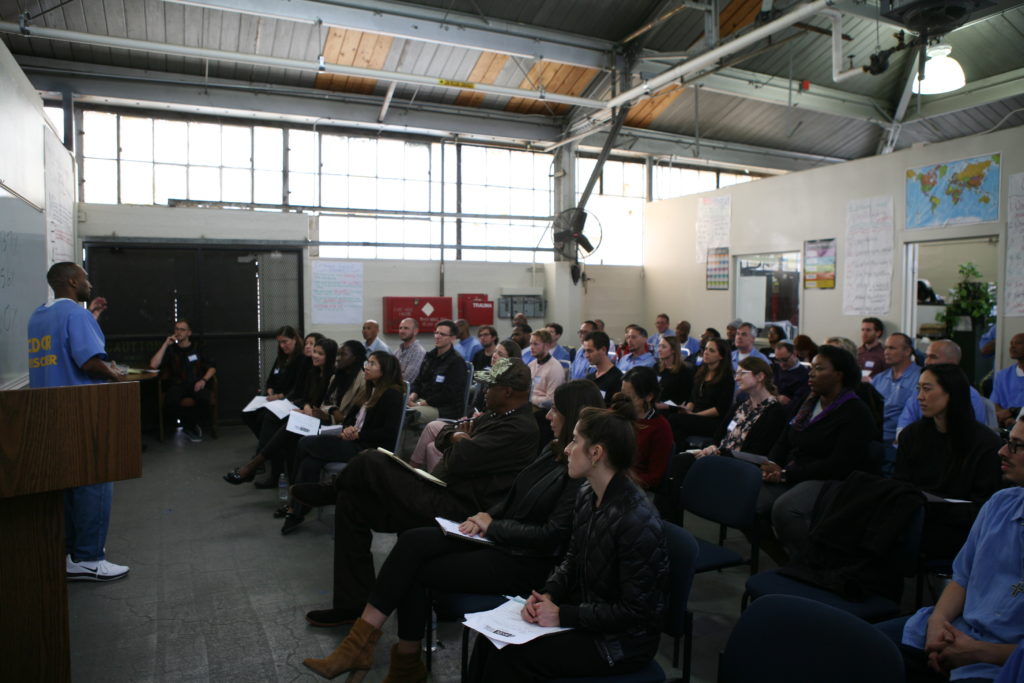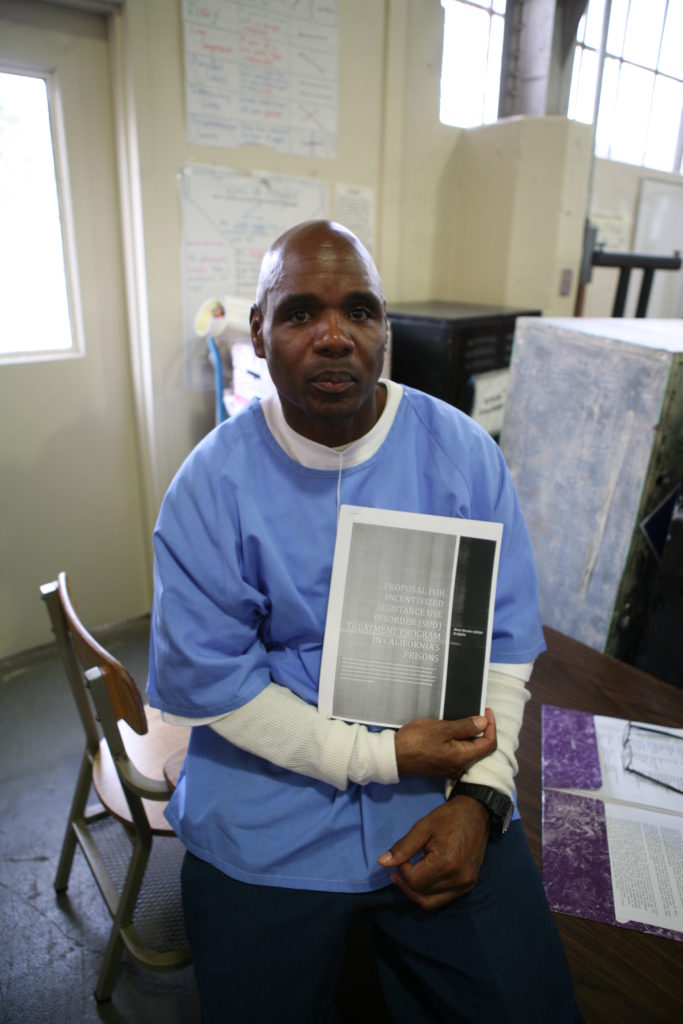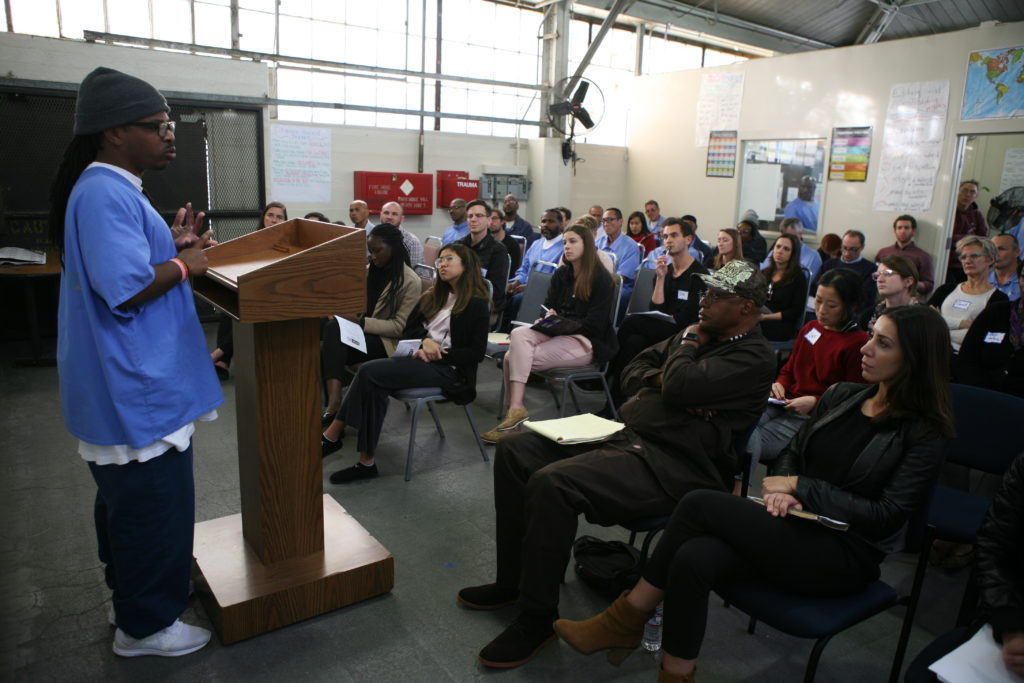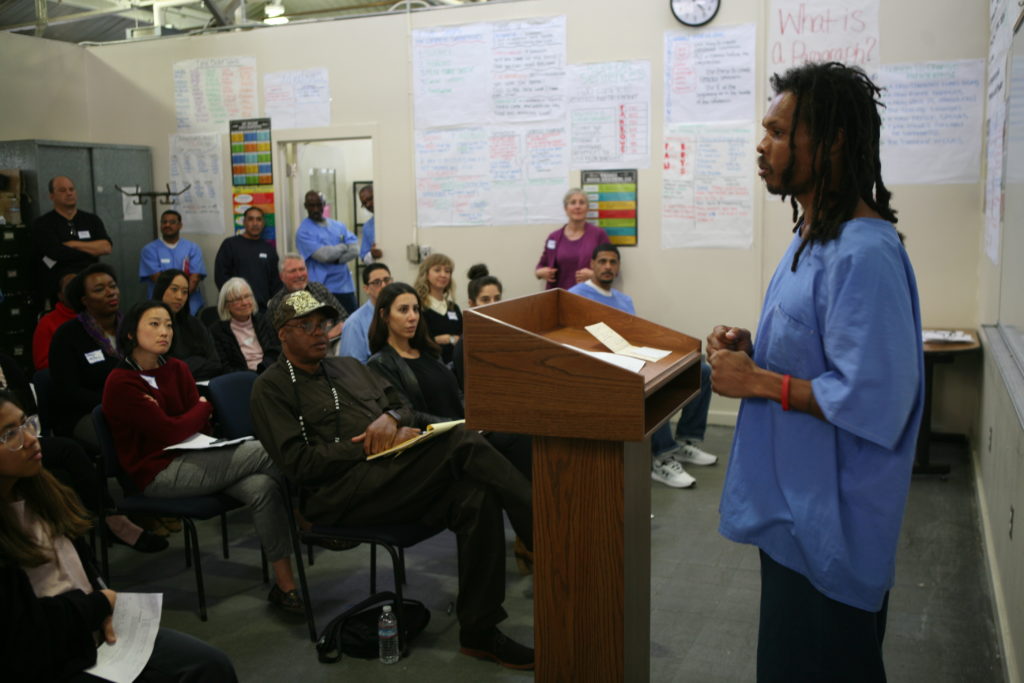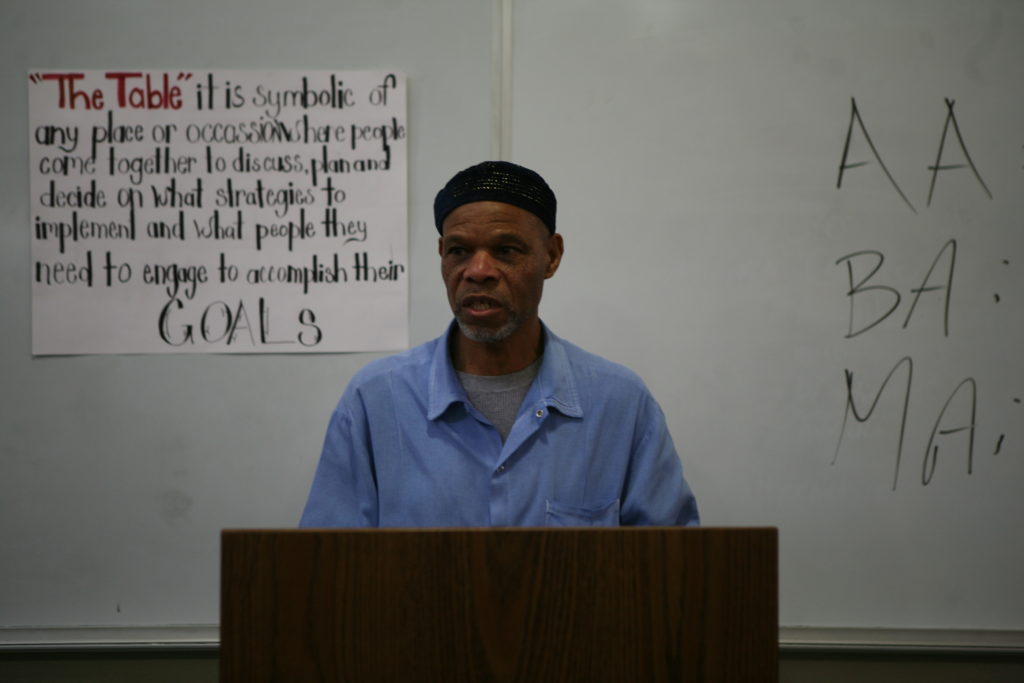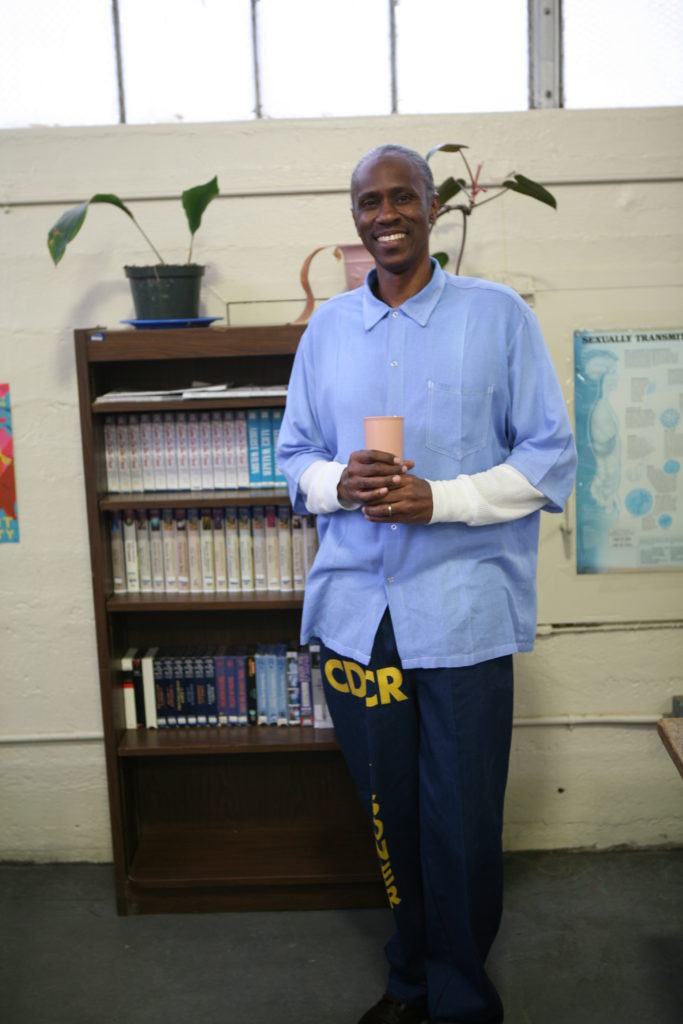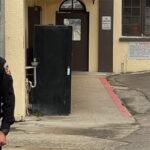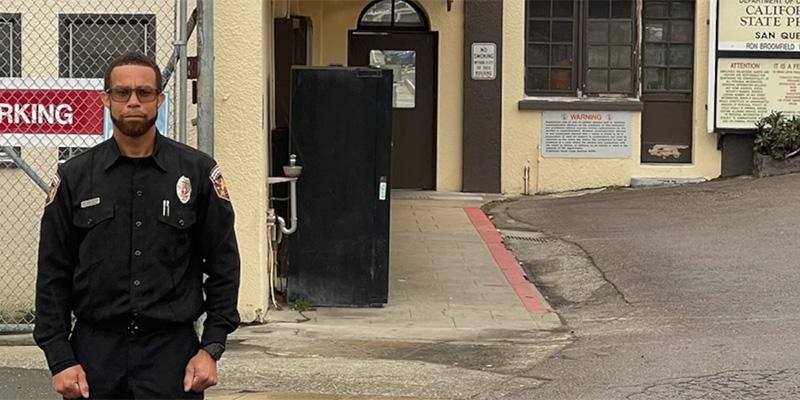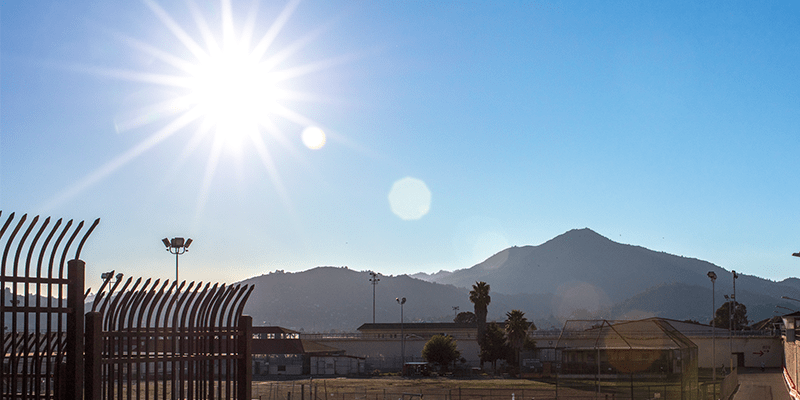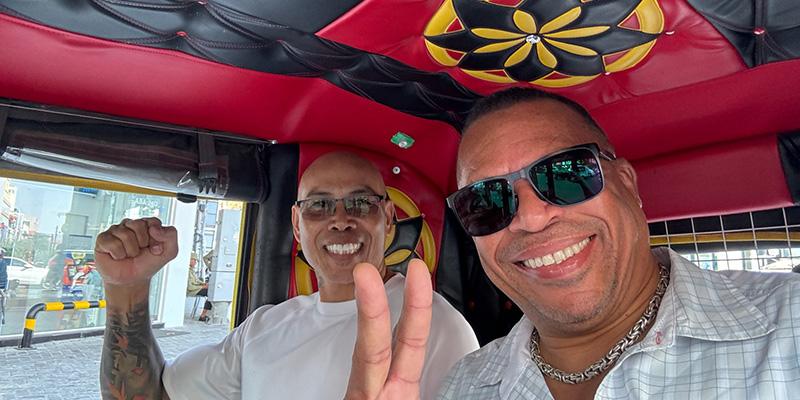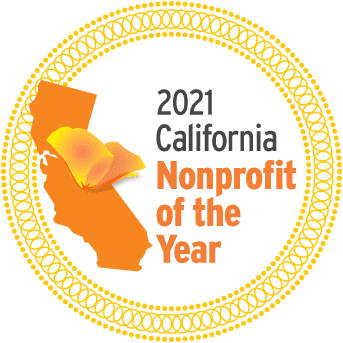On January 26, the Prison University Project hosted a Symposium on Criminal Justice Reform and Philanthropy in partnership with the Chan Zuckerberg Initiative. This event showcased proposals developed by students of the College Program at San Quentin State Prison through an intensive workshop during the fall semester. Guided by two facilitators and four research assistants, students first learned about theories of power and the foundations of philanthropy before crafting their own solutions to mass incarceration. The symposium allowed those most impacted by the criminal justice system to claim their rightful seat at the table of reform and contribute to the conversations surrounding their lives and futures. Summaries of some of the students’ proposals are featured below.
Randy Akins
Akins proposes the creation of a speakers bureau of formerly incarcerated people and their allies to inform the public about the impacts of mass incarceration and to help instigate conversation about alternatives to the current system that has caused such harm, especially in African-American communities. His proposal highlights the potential of facilitating ways for formerly incarcerated people to contribute to their communities and to the conversation around criminal justice reform. Due to their intimate familiarity with the system, the voices and efforts of formerly incarcerated people in working to improve the system and strengthen their communities are significant.
Wayne Boatwright and Clark Gerhartsreiter
Gerhartsreiter and Boatwright propose the creation of a startup research institute – The Institute for Decarceration Studies – that finds, structures, and scales solutions for criminal justice reform with the particular goal of reversing mass-incarceration. The Institute aims to do this through the discipline of academic inquiry, combined with strategic synthesis and analysis of the best research and data. Operating from within a state prison and staffed by incarcerated persons, the Institute would publish a quarterly academic research journal. It will also conduct off-site parallel operations through a scholar-in-residence program in collaboration with a major research university.
Steven Brooks
Brooks proposes that CDCR implement an incentivized, rehabilitative program intended to reduce or eliminate the possession, use and sale of addictive substances within its institutions. Brooks believes that this would also help facilitate incarcerated people’s focus on rehabilitation. Today, California’s prison system is full of drugs, drug users and drug dealers, and often incarcerated people are forced through default to “hustle” for survival. Even those who are serious about their rehabilitation process often lose their willpower to abstain from illegal trading after too many nights of going to bed hungry. To encourage prisoners who have little or no family support to choose participation in rehabilitation programs, CDCR could offer incentives for participation in substance use disorder treatment and drug counseling programs. They would not only benefit the participants by helping them recover from addictions, but make CDCR institutions less punitive and more rehabilitative in nature.
Conrad Cherry
Cherry proposes the funding of re-entry “advocates” who will use technology to help incarcerated people get housing and employment. Currently, people preparing for release, and especially those preparing for parole hearings, have a hard time connecting to available programs and services because of technological and logistical barriers. It is difficult for many people, especially those without family support, to prove to the parole board that they will be able to support themselves in the community because they cannot communicate with potential employers or transitional housing providers easily. Funding advocates to assist people in locating, communicating with, and applying for employment and housing would greatly improve people’s chances for success when they re-enter the community and improve their ability to demonstrate their ability to function successfully in the community to the parole board.
Roberto DeTrinidad
For the average U.S. citizen, our current judicial system is a vast web of protocols, technicalities and jargon. There is, effectively, a language barrier preventing clear understanding. DeTrinidad proposes a pilot project that seeks to alleviate the gaps in understanding that exist within today’s court rooms. DeTrinidad proposes creating a panel of psychologists, linguists, educators, justice system stakeholders (i.e., District Attorneys, Public Defenders, etc.) and average U.S. citizens of varying reading levels to review and simplify the language used in court and court documents. In addition, beginning with a single courtroom, this pilot project would test a system where judges and other courtroom actors would have to confirm a defendant’s understanding of each discussed item before proceeding, as well as create a space for open dialogue in the courtroom.
Ronell Draper
Community reform and prison reform should go hand in hand; there needs to be a conversation between the two. Instead of only focusing on self-help programs inside prisons, people working on prison reform should also work on community building in order to address past traumas and prevent future traumas. Draper’s proposal addresses the need for criminal justice reform to co-exist with community reform efforts – to humanize returning citizens while the community can have real interaction with the incarcerated by attending self-help groups alongside one another, becoming allies and champions for one another.
Teddy Fields
Fields seeks funding to support a ballot initiative to reform California’s Three Strikes Law. The People’s Fair Sentencing and Public Safety Act, originally proposed for the 2018 ballot, would change the language of the Three Strikes Law to ensure that individuals whose triggering offense is nonviolent no longer be exposed to a lengthy life sentence. It would also change the way that the law classifies certain crimes that are currently considered “serious” crimes or violent felonies despite not involving any actual violence. It would ensure that these individuals are able to secure release into society without racking up extra time for repeated non-violent convictions, and it would save the taxpayers millions of dollars. This Act seeks to rectify this illogical practice by amending the Penal Code to make a distinction between violence and nonviolence. Under Federal guidelines, this very distinction exists; 18 USC 3559 (3)(H)(i), (ii). The amendments will serve to protect nonviolent offenders from suffering miscarriages of justice.
Chung Kao
Kao proposes broad funding for the expansion of higher education programs across prisons in the United States, which would allow those who are incarcerated to obtain post secondary degrees. Based on the overwhelming success of the Prison University Project, Kao would like to see this model funded and replicated across the United States. If funded, Kao believes that this initiative will lead to a significant decrease in the overall rates of recidivism. It would also provide a space for incarcerated folks to gain the knowledge and skills they need to gain employment upon release. Finally, similar programs have been proven to have positive effects on self-identity, mental health, relationships as well as race relations.
James King
King proposes investment in a new media company that will provide an online platform for people who are directly impacted by the criminal justice system. In particular, this media platform would provide a system for educating and sharing information with people who are currently incarcerated and an outlet for incarcerated people to directly share their stories, thoughts, and observations about life on the inside. If funded, King would expand the Re:Vision blog (a current project of Re:store Justice) to provide an avenue for incarcerated people to learn about, shape, and independently lead the criminal justice reform conversation.
Chan Lam
Lam proposes the creation of a job-seeking platform designed specifically to help recently paroled people find employment. This platform seeks to explicitly outline the federal financial incentives for hiring people with felony convictions and features a streamlined filing application so employers can receive their refunds. There are no upfront costs for companies or people on parole to use the site and it features a rating system similar to GlassDoor. Lam’s mission is to connect more parolees with meaningful, long-term employment and financial independence. Funding for this platform would help him achieve this fundamental purpose and improve employment opportunities for people coming home from prison.
Isaiah Love
Love argues that prisons should be transformed into academies for higher education and for building new, pro-social habits. This culture would help incarcerated people change their lives and adopt new habits during their time in prison, which, in turn, would allow them to succeed in the community upon release. Orienting correctional institutions around cultural and behavioral transformation would mean providing opportunities for all incarcerated people to access high quality higher education, to develop and maintain new habits, and to create new identities.
Michael Mackey
Mackey’s proposal involves reforming how the justice system interacts with and treats people with mental illness. He believes that the current system does not address the needs of people with mental illness sufficiently. Access to assessment, treatment, and (when necessary) referral for mental illness (including substance use disorder) should be a part of the general health services available to all incarcerated people. People with mental illness in prison, he says, should have access to the same types of psychotropic medication and psychosocial support as people in the community outside of prison.
William Merlen
Merlen proposes a program to help address and heal feelings of social inadequacy that are common among incarcerated people and that cause real harm to their ability to heal, develop supportive social networks, and re-enter the community successfully.
Lonnie Morris
Far too often, the criminal justice reform agenda is created without sufficiently utilizing the specialized knowledge and lived experiences of currently incarcerated men and women. In order to remedy this problem, Morris proposes to conduct a series of workshops on criminal justice reform strategies and priorities (entitled “Resetting the Criminal Justice Reform Table”) for philanthropists, businesses, community based organizations (CBOs), judges, lawmakers, district and defense attorneys, law enforcement and other drivers and influencers in the criminal justice reform movement. These workshops would bring the perspective of currently incarcerated people “back to the table” and allow them to help shape more inclusive, meaningful, and sustainable criminal justice reform policies, strategies, and priorities.
Rahsaan Thomas
Thomas seeks to fund a new project of Prison Renaissance, which is an organization that Thomas co-founded that uses art to support the healing of incarcerated people and to connect them to the wider community. This project, called We Rehabilitate Us Program (WRUP), would create opportunities for incarcerated artists to collaborate with outside artists. Although rehabilitative programs like art therapy are proven to reduce recidivism, CDCR inconsistently maintains art programs. Unlike CDCR programs, which rely on state funding, outside funding and collaboration with volunteers would enable WRUP to pursue its goals free from bureaucratic constraints. Through WRUP, Thomas envisions a future of reduced disciplinary infractions in prison environments. He hopes WRUP will serve as the catalyst to create mentorships and collaborative relationships between incarcerated people and communities outside, financially empower artists by producing three journals a year that pay artists for their work, and reduce recidivism rates to zero for program participants.
Jesse Vasquez
Vasquez writes, “Relatively few people adversely impacted by public policy are involved in the decision-making process. The vast majority of inner city Americans, especially black and brown people, are at a disadvantage in the public arena because they lack knowledge of the governmental framework that regulates how bills and ballot measures become law. Few of them know whom to address their concerns to and the rest of them assume that no one will care enough to listen.” He proposes the funding of a “Civic Empowerment Program” designed to strengthen socio-political bonds by providing everyone with a platform of political expression. Through a program serving middle school, high school and college students, as well as others eager to learn, Vasquez envisions an education infrastructure bolstering the US democracy and engagement within it. This infrastructure will increase civic engagement and, therefore, hold the capacity to transform the current criminal justice system.
Charles Williams
Williams proposes funding for a holistic rehabilitation program for people ages 35 and older who have been incarcerated for 15 years or more. The main components of this program would include: mental health professionals guiding participants through confrontational therapy and coping skills, developing a mechanism of community responsibility that clusters participants into accountability groups, and an investment in each participant to support their successful transition into society. Williams further proposes that the Mental Health Department play an integral role in both developing the curriculum and providing adequate psychological evaluation of incarcerated persons prior to their release. If funded, Williams believes that this initiative will serve as a holistic approach for incarcerated people who are preparing for their release to successfully reintegrate into society with minimal barriers.
Van Wilson
Wilson proposes an alteration to CDCR policy in order to allow incarcerated people to own and use cell phones. He believes that providing access to cell phones would promote the independence, self-reliance, self-esteem, and community ties of incarcerated people. Opponents of this idea claim that incarcerated people would use cellphones behind walls to invite criminal activity. Wilson envisions a cellphones-behind-walls policy that works for everyone and improves public safety; calls would be monitored via authorized ID codes and the provider would be equipped with technology that prevents incarcerated people from accessing sensitive information. A working policy has the potential to eliminate unauthorized cell phone contraband and protect public safety, while improving self-esteem, self-actualization, and family and social ties for incarcerated people. The value of providing an outlet for self-expression and connection would be seen in the increased safety of CDCR institutions and smoother re-entry when people leave prison.
Phoeun You
You proposes the creation of a 13-week seminar on the causes and impacts of, coping mechanisms for, and strategies for healing from trauma led by incarcerated facilitators for prison staff and volunteers. This “Trauma Academy” would aim to build empathy, cultivate a deeper understanding of personal traumas, guide healing and uncover coping skills. Funding for the seminar would help pay for facilitation fees as well as marketing materials, a website and workshop training. You believes that once the pilot program achieves success at San Quentin, it can expand to prisons across the nation and include workshops for society at large. Processing, understanding, and healing from trauma is an important way to make communities safer. This seminar aims to both transform individuals’ lives and make prisons safer and healthier for staff and incarcerated people alike.
Please note that the Prison University Project became Mount Tamalpais College in September 2020.
